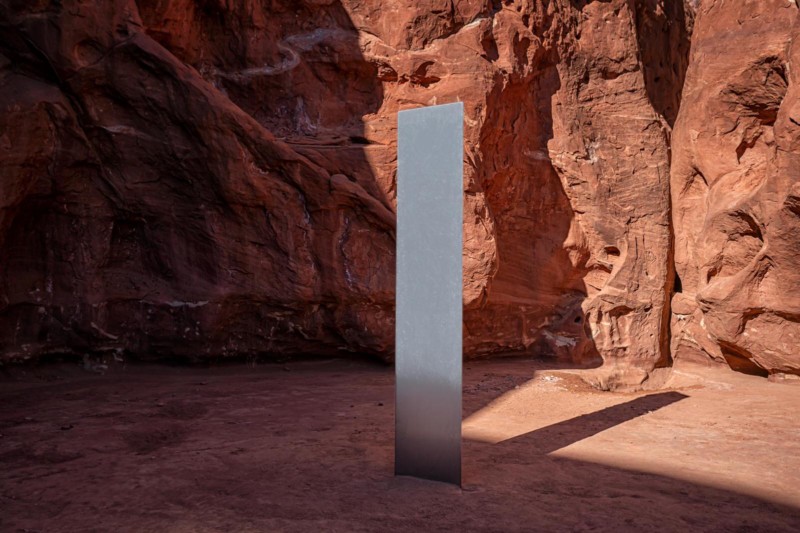The idea of terra incognita exerts a powerful pull at this moment.
此时此刻,“未发现的地域”这一想法产生了强大的吸引力。
The pandemic has radically disordered our sense of space and place; whether these months of social distancing were spent hiding inside or seeking uncrowded spots in the open air, they have altered our ideas about where we fit in the world and what strange events may be unfolding far from us.
疫情彻底扰乱了我们的空间感和位置感;无论这几个月的社交隔离是躲在屋内还是在户外寻找不拥挤的地方,它们都改变了我们的想法:关于自己在这个世界上的位置以及远处可能会发生什么奇怪事件。
In any year, the discovery of a mysterious monument in the desert would capture the imagination.
不论是在哪一年,在沙漠中发现一座神秘的纪念碑都会引起人们的联想。
But the fascination that has greeted the monolith these past few weeks feels significant, the sign of a jolt to the collective unconscious.
但在过去的几周里,迎接这座巨石的魅力让人感到意味深长,这是集体无意识受到冲击的标志。
The monolith is a literal blank screen, on whose shimmering surface we can etch our terrors, longings, fantasies, crackpot theories, gallows humor and other dreams and nightmares incubated in the anxious purgatory of 2020.
巨石就是一个空白屏,在它闪闪发光的表面上,我们可以蚀刻我们的恐惧、渴望、幻想、疯狂的理论、黑色幽默和其他在2020年酝酿的噩梦。

It is too early to know if the homemade monoliths rising in streets and parks around the world are totems of a passing craze or lasting landmarks in the making.
现在还不知道在世界各地的街道和公园里出现的自制巨石是一时狂热的图腾还是正在形成的永久性地标。
But it is surely not a stretch to read symbolic significance in their proliferation at the end of the most dreadful year in living memory: a collective desire to mark a transition, to post figurative headstones commemorating the demise of 2020.
但在记忆中最可怕的一年即将结束之际,解读巨石扩散的象征意义肯定不是一件难事:这是一种集体的愿望,标志着一种过渡、一种后象征性的墓碑,来纪念2020年的消亡。
Or perhaps the better metaphor comes from the Kubrick movie.
更恰当的比喻或许来自库布里克的电影。
The year has turned us earthlings into aliens, wanderers on an unfamiliar planet.
这一年把我们地球人变成了外星人和流浪者,在一个陌生的星球上流浪。
Who among us doesn't want to leave this place behind and go hurtling through space-time, into a new year, and back to another world?
我们当中谁不想离开这个地方,穿越时空,进入新的一年,回到另一个世界呢?
译文由可可原创,仅供学习交流使用,未经许可请勿转载。












